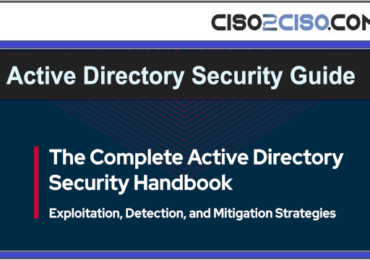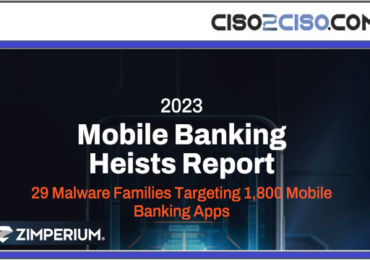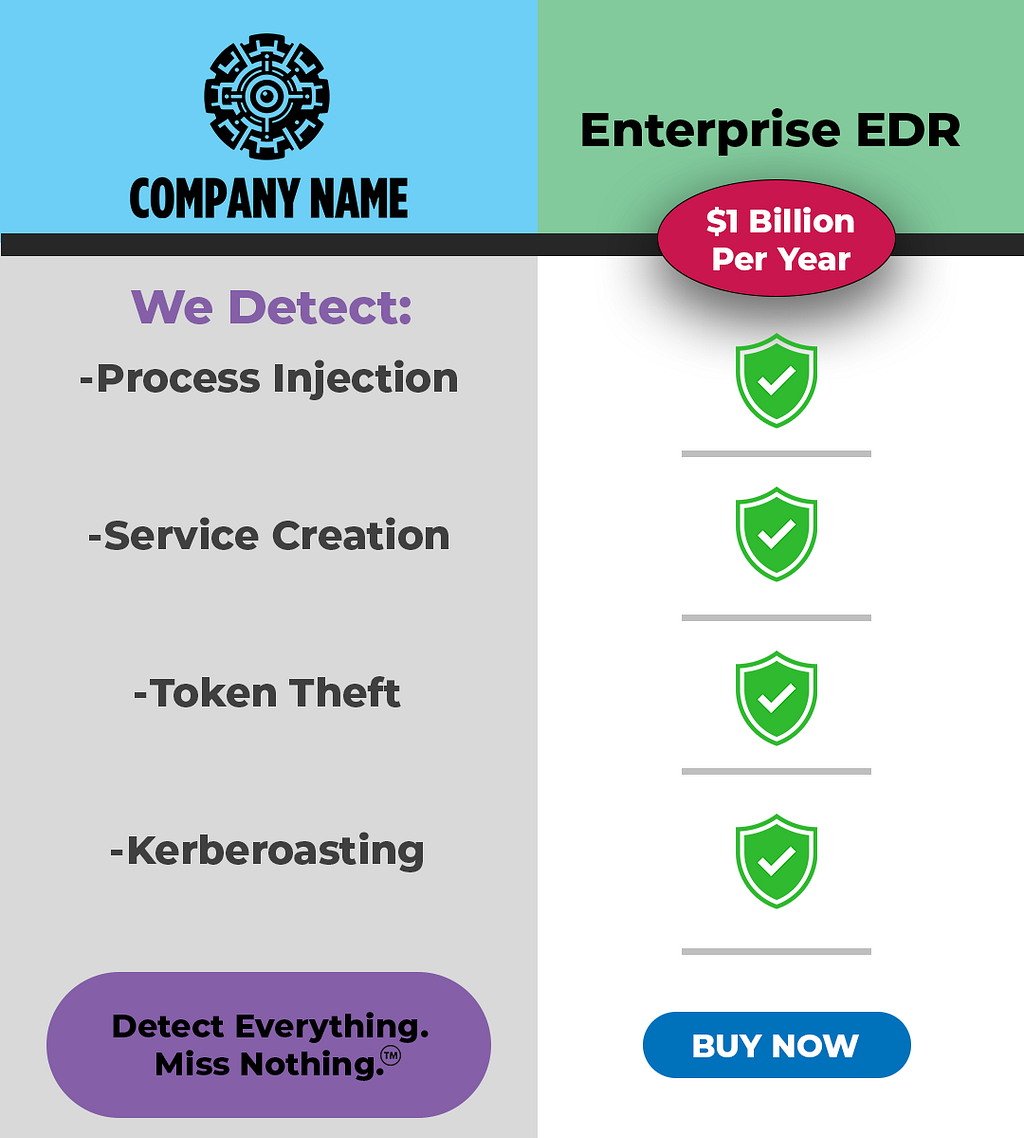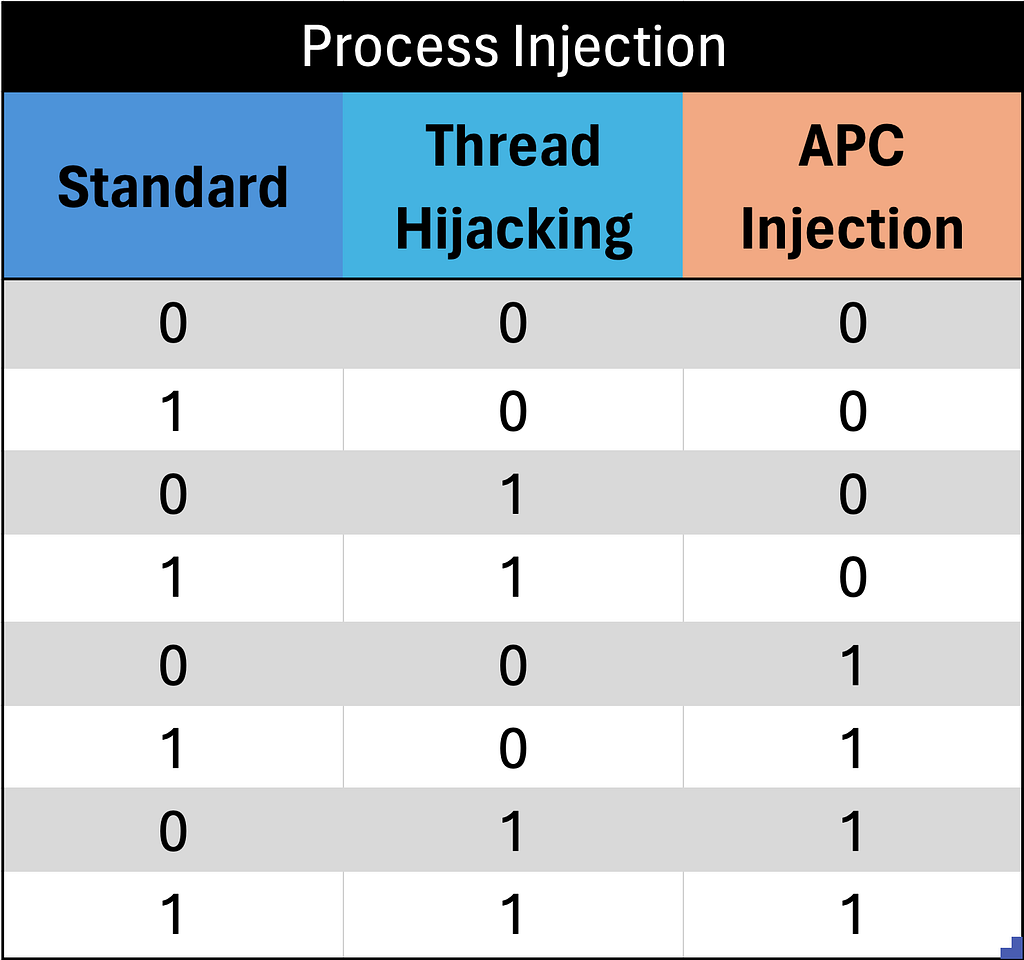Federal Agency Warns (Patched) Critical Linux Vulnerability Being Actively Exploited
Read more of this story at Slashdot.
Read more of this story at Slashdot.

Active Directory (AD), introduced with Windows 2000 [1], has become an integral part of modern organizations, serving as the backbone of identity infrastructure for 90% of Fortune 1000 companies [2]. Active Directory is widely used by organizations for its simplicity and centralized management approach. It is an attractive solution for businesses as it makes it […]
La entrada Active Directory Security se publicó primero en CISO2CISO.COM & CYBER SECURITY GROUP.

Zimperium’s latest research explores a dynamic and expanding threat landscape by meticulously analyzing 29 banking malware families and associated trojan applications. This year alone, the research team identified 10 new active families, signifying the continued investment from threat actors in targeting mobile banking applications. The 19 adversaries who persist from last year reveal new capabilities […]
La entrada 2023 Mobile Banking Heists Report se publicó primero en CISO2CISO.COM & CYBER SECURITY GROUP.
Cybercrime group ShinyHunters reportedly demanding £400,000 ransom to prevent data being sold
Ticketmaster has been targeted in a cyber-attack, with hackers allegedly offering to sell customer data on the dark web, its parent company, Live Nation, has confirmed.
The ShinyHunters hacking group is reportedly demanding about £400,000 in a ransom payment to prevent the data being sold.
Continue reading...© Photograph: Rafael Henrique/SOPA Images/REX/Shutterstock
© Photograph: Rafael Henrique/SOPA Images/REX/Shutterstock
RBI has issued comprehensive master directions and guidelines for banks and non-banking financial corporations to identify and address operational risks and weaknesses. These guidelines are based on recommendations from working groups focused on information security, e-banking, governance, and cyber fraud. The primary motivation behind these directives is the growing need to mitigate cyber threats arising […]
The post What is an IS (RBI) Audit? appeared first on Kratikal Blogs.
The post What is an IS (RBI) Audit? appeared first on Security Boulevard.

As DDoS attackers become more sophisticated and the attack surface grows exponentially, businesses must expand beyond an ideology of prevention to include a focus on early detection and response.
The post Adaptive DDoS Defense’s Value in the Security Ecosystem appeared first on Security Boulevard.
Read more of this story at Slashdot.
Read more of this story at Slashdot.

Senator Ron Wyden wants the FTC and SEC to investigate the ransomware attack on UnitedHealth's Change subsidiary to see if there was criminal negligence by the CEO or board.
The post Senator Calls for FTC, SEC Probe Into UnitedHealth’s ‘Negligence’ in Breach appeared first on Security Boulevard.

Enlarge (credit: Getty Images)
The US Cybersecurity and Infrastructure Security Agency has added a critical security bug in Linux to its list of vulnerabilities known to be actively exploited in the wild.
The vulnerability, tracked as CVE-2024-1086 and carrying a severity rating of 7.8 out of a possible 10, allows people who have already gained a foothold inside an affected system to escalate their system privileges. It’s the result of a use-after-free error, a class of vulnerability that occurs in software written in the C and C++ languages when a process continues to access a memory location after it has been freed or deallocated. Use-after-free vulnerabilities can result in remote code or privilege escalation.
The vulnerability, which affects Linux kernel versions 5.14 through 6.6, resides in the NF_tables, a kernel component enabling the Netfilter, which in turn facilitates a variety of network operations, including packet filtering, network address [and port] translation (NA[P]T), packet logging, userspace packet queueing, and other packet mangling. It was patched in January, but as the CISA advisory indicates, some production systems have yet to install it. At the time this Ars post went live, there were no known details about the active exploitation.

In “Living off the Land attacks,” adversaries use USB devices to infiltrate industrial control systems. Cyberthreats from silent residency attacks put critical infrastructure facilities at risk.
The post A Major Industrial Cybersecurity Threat: Living off the Land Attacks appeared first on Security Boulevard.

Daft name, serious risk: Kit from ActionTec and Sagemcom remotely ruined and required replacement.
The post ‘Pumpkin Eclipse’ — 600,000+ Rural ISP Routers Bricked Beyond Repair appeared first on Security Boulevard.
Transparency isn't just about promising action, it's about proving it. It means sharing the data and results that show you're following through on your commitments.
The post Cybersecurity Insights with Contrast CISO David Lindner | 5/31/24 appeared first on Security Boulevard.

Cloud penetration testing, particularly for AWS (Amazon Web Services), involves systematically evaluating the security of AWS cloud infrastructure to identify vulnerabilities and weaknesses. This process includes testing various AWS services, such as EC2, S3, RDS, and Lambda, to ensure they are configured securely and are resilient to attacks. AWS pentesting requires a deep understanding of […]
La entrada Cloud AWS Pentest se publicó primero en CISO2CISO.COM & CYBER SECURITY GROUP.

Securit y at the epicenter of innovation: That ’s not t he world we live i n today, but what i f it were? While excitement and budgets are rising for cutting-edge security programmes, progress on actually improving security is sluggish, even stagnant. PwC’s 2024 Global Digital Trust Insights survey of 3,876 business and tech […]
La entrada C_Suite Playbook Putting security at the Epicenter of Innovation se publicó primero en CISO2CISO.COM & CYBER SECURITY GROUP.

Artificial Intelligence (AI) is a typical dual-use technology, where malicious actors and innovators are constantly trying to best each other’s work. This is a common situation with technologies used to prepare strategic intelligence and support decision making in critical areas. Malicious actors are learning how to make their attacks more efficient by using this technology […]
La entrada Artificial Intelligence and Cybersecurity Research 2023 se publicó primero en CISO2CISO.COM & CYBER SECURITY GROUP.

Android security research plays a major role in the world of cybersecurity that we live in today. As of 2024, Android has a 71.74% global market share of mobile operating systems’ according to Stat Counter. There are presently 3.3 billion Android OS users in the world according to Business of Apps. With the advent of […]
La entrada Android Security Research Book se publicó primero en CISO2CISO.COM & CYBER SECURITY GROUP.
In recent years, containers have become a staple in modern IT infrastructures. They provide extreme flexibility and efficiency in deploying applications. Yet, as containerization has grown in popularity, so has the need to secure these environmеnts. Container security is defined as protecting against threats and ensuring compliance with safety standards in containerized envirоnments. It has […]
The post The Evolution of Security in Containerized Environments appeared first on TuxCare.
The post The Evolution of Security in Containerized Environments appeared first on Security Boulevard.
As per recent reports a new social engineering attack attributed to the North Korea-linked Kimsuky hacking group is targeting human rights activists using fake Facebook accounts. This tactic, involving fictitious identities, marks a significant shift from their typical email-based spear-phishing strategies. According to a report by South Korean cybersecurity firm Genians, the attackers pose as […]
The post Alert: Kimsuky Hacking Group Targets Human Rights Activists appeared first on TuxCare.
The post Alert: Kimsuky Hacking Group Targets Human Rights Activists appeared first on Security Boulevard.
Reading Time: 4 min Scammers impersonate universities in phishing emails. Learn 5 red flags to identify fake university emails and avoid giving away personal information.
The post How to Spot a Fake University Email appeared first on Security Boulevard.
The email addresses and other information of hundreds of British, French and EU politicians have been found on the dark web.
The post Information of Hundreds of European Politicians Found on Dark Web appeared first on SecurityWeek.
Increasingly frequent natural disasters leave islanders reliant on processed foods for months on end – with deeply concerning knock-on effects to health
When twin cyclones Judy and Kevin hammered their way through the 83 tropical islands of Vanuatu in March 2023, the government and NGOs were quick to distribute supplies. The South Pacific country’s crops had been decimated and the need to feed the 300,000-plus population was a priority.
The bags of rice, packets of noodles and tinned tuna that communities depend on for the months after a disaster were welcomed. But unlike native staples such as yams, taro and sweet potato, these emergency foods only serve to worsen the region’s non-communicable diseases (NCDs) problem, according to experts.
Continue reading...© Photograph: FSAC
© Photograph: FSAC
Is your website vulnerable to web-automated attacks? Learn how AI can help protect your business and customers from the growing threat of cybercrime.
The post From Phishing to Fraud: How AI Can Safeguard Your Customers appeared first on Security Boulevard.


Enlarge (credit: Getty Images)
An international cast of law enforcement agencies has struck a blow at a cybercrime linchpin that’s as obscure as it is instrumental in the mass-infection of devices: so-called droppers, the sneaky software that’s used to install ransomware, spyware, and all manner of other malware.
Europol said Wednesday it made four arrests, took down 100 servers, and seized 2,000 domain names that were facilitating six of the best-known droppers. Officials also added eight fugitives linked to the enterprises to Europe’s Most Wanted list. The droppers named by Europol are IcedID, SystemBC, Pikabot, Smokeloader, Bumblebee, and Trickbot.
Droppers provide two specialized functions. First, they use encryption, code-obfuscation, and similar techniques to cloak malicious code inside a packer or other form of container. These containers are then put into email attachments, malicious websites, or alongside legitimate software available through malicious web ads. Second, the malware droppers serve as specialized botnets that facilitate the installation of additional malware.
As the threat landscape continues to grow, with new breaches being announced every day, Imperva continues to stay one step ahead of attackers. HTTP/2 exploits seem to be growing every quarter as more attackers use this vulnerability in new ways. We previously wrote about how Imperva protected its customers from the first HTTP/2 vulnerability, ‘Rapid […]
The post Mitigate Http/2 continuations with Imperva WAF appeared first on Blog.
The post Mitigate Http/2 continuations with Imperva WAF appeared first on Security Boulevard.

The National Security Agency (NSA) is providing guidance on deploying a comprehensive zero-trust framework that focuses on the application and workload pillar of the Zero Trust Maturity Model introduced by the Cybersecurity and Infrastructure Security Agency.
The post NSA’s zero-trust maturity for AppSec: What you need to know appeared first on Security Boulevard.

Cloudlfare acquires Boston seed-stage startup BastionZero to bolster its Zero Trust Network Access technology portfolio.
The post Cloudflare Expands Zero Trust Capabilities with Acquisition of BastionZero appeared first on SecurityWeek.
SecurityWeek editor-at-large Ryan Naraine examines the broad tension between tech innovation and privacy rights at a time when ChatGPT-like bots and generative-AI apps are starting to dominate the landscape.
The post Microsoft’s Windows Recall: Cutting-Edge Search Tech or Creepy Overreach? appeared first on SecurityWeek.

Enlarge (credit: Getty Images)
One day last October, subscribers to an ISP known as Windstream began flooding message boards with reports their routers had suddenly stopped working and remained unresponsive to reboots and all other attempts to revive them.
“The routers now just sit there with a steady red light on the front,” one user wrote, referring to the ActionTec T3200 router models Windstream provided to both them and a next door neighbor. “They won't even respond to a RESET.”
In the messages—which appeared over a few days beginning on October 25—many Windstream users blamed the ISP for the mass bricking. They said it was the result of the company pushing updates that poisoned the devices. Windstream’s Kinetic broadband service has about 1.6 million subscribers in 18 states, including Iowa, Alabama, Arkansas, Georgia, and Kentucky. For many customers, Kinetic provides an essential link to the outside world.

What we know so far: A Ticketmaster AWS instance was penetrated by unknown perpetrators; “ShinyHunters” is selling stolen data on their behalf. Don’t forget to add the hidden 5% fee to the ransom.
The post Ticketmaster Hack Ticks Off 560M Customers in 1.3TB Breach appeared first on Security Boulevard.
Increasing our understanding of EDR capabilities in the face of impossible odds.

I recently had a discussion with our chief strategist, Jared Atkinson, about purple teaming. We believe that large quantities of procedures per technique affect the overall success of the assessment. I began to theorize how I could prove this concept. In this post, I will discuss the validation of my theory.
When you take a technique and make a broad statement of detection you are often ignoring orders of magnitude more detail, forcing those who view it to make a broad assumption about what is and is not detected. Take this hypothetical EDR marketing:

While some portions of this example are purely satirical, this still seems great! We have four different techniques that are detected! But is this the full story? If you have been following Jared Atkinson’s posts, you may realize that each of these techniques look something like this:

This is a set of operation chains for different procedures of process injection. If you are unfamiliar with what operation chains are, I recommend reading Jared’s blog series on Tactical to Functional. Using this information, I asked myself, “How could I build a representation of my understanding of the EDR’s capabilities with respect to process injection?
EDR capabilities can, and should, be measured as a set of data. Our industry has different methods of measuring capabilities and representing the resulting data. Common examples that are used for measurement include Mitre ATT&CK Evaluations, or generically mapping the Mitre ATT&CK framework to testing performed via something like Atomic Red Team. The problem with evaluations of this type are that they typically focus on one variation of a technique, which can only represent one procedure. While usually not explicitly stated, those using those projects often mistake the results for full “coverage” of that technique. The reality is that none of these approaches are designed to be used or interpreted in this fashion.
The argument I am going to make throughout this post is that these tests are not particularly sufficient to guarantee coverage. In fact, no amount of testing will ever guarantee 100% coverage of any given technique. This does not mean all hope is lost of detecting the use of process injection, but it does mean that we need to better understand what our testing results actually mean — so at least we have knowledge of the potential gaps prior to accepting the risk.
To start proving my argument, let’s start in Excel. We will build a table that represents a set of process injection procedures that an EDR may detect. The columns will represent the individual procedures while the rows will represent each possible combination of procedures an EDR may detect. We will treat a 0 as “not detected” and a 1 as “detected”. For this first example I will limit the procedures to “Standard” (e.g., shellcode injection) and “Thread Hijacking.” I am going to say, for the sake of argument, that these are the only two known forms of process injection. This means that there are four possibilities for an EDR’s capability to detect process injection. At this point, without running any tests, an end user of an EDR will have no idea which of the four outcomes is true for their EDR.

We can safely rule out some of these outcomes because we assume that an EDR is detecting at least one of these procedures to make the claim that it detects process injection. Let’s say that the most likely candidate for detection is standard shellcode injection since that is the canonical form that comes to mind when process injection is mentioned.
If we know that standard injection is detected with our theoretical EDR, then we now have two potential cases, albeit in our hypothetical world where there are only two known forms of process injection. We can show this on the chart by graying out the rows that are not relevant to our EDR.

The chart shows that by either testing or seeing real-world examples of an EDR detecting a given procedure we removed 50% of the possible combinations of process injection procedures the EDR can potentially detect.
I want to be clear here — this is not a probability that an EDR will detect a given technique, or a full coverage of the EDR capabilities. This is merely filling in 50% of our understanding of an EDR’s capability regarding a specific technique using known procedures for that technique. I am going to continue stressing this throughout this post. All of these statistics are applicable to better understanding an EDR but none of the table entries are weighted to convey the prevalence or any other attribute of a procedure.
Let’s add a third procedure and see what happens to our potential capability.

We are dealing with exponential math here. There are two states that our data can be in, 0 or 1. So the number of potential combinations of procedures from the table that an EDR can detect is n^x , where “n” is the number of potential results and “x” is the number of procedures. So the table above can be represented as 2³or 8.
With 3 process injection procedures, we have expanded our hypothetical world to 8 possibilities, so what happens if I again run a test to see if my EDR detects standard shellcode injection?

We have once again eliminated 50% of the possibilities of what our EDR detects, with a single test case, even though we have doubled the amount of potential possibilities. What happens if you run a second test, and see if your EDR detects thread hijacking?

It does detect it! This allows us to throw away all of the potential states where thread hijacking is 0. Another 50% of the remaining possibilities have been removed. Are you starting to see the pattern? For each test case we ran we could remove 50% of the remaining possibilities from the table.
Let’s try one more test and bump this up to 6 total forms of process injection. Following our previous formula, our potential set of detection possibilities should be 2⁶ or 64.

Awesome! As before, I want to test my EDR and see if it is capable of detecting standard shellcode injection. We already know that it does from our previous testing but will it really remove 50% of our detection possibilities? Before immediately showing you the answer, look at the first column of binary data.

The options for Standard Shellcode Injection alternate between 0 and 1 every single time. So if we do detect it, then it will absolutely remove 50% of our results; just as it did before with a different number of process injection procedures. You may recognize these tables as truth tables and our testing process as being similar to a binary search algorithm, allowing each of our tests to reduce our possible detection combinations by half. This is demonstrated again in the following graphic by running each test in succession for the six chosen procedures shown before, and taking it to the logical conclusion.

This simply validates our previous testing with a larger dataset; There has been a singular theme throughout these tests. Each time we had limited our table of process injection procedures to a specific number of remaining rows. Given enough testing, it’s possible to arrive at a single combination of procedures an EDR will detect for a given technique, but what happens when we don’t know how many procedures there are?
Excel works well to illustrate finite numbers of procedures for performing a technique, but it fails to work as well when we don’t know what the true number of procedures are. The reality is that even though I listed six different forms of process injection for this post, there are certainly more than that in existence. In fact, as far as I know, there are an infinite number of ways to perform process injection!
The easiest way to visually represent this is with a curve.
Note: I am not good at math. The curve and the resulting formula is not an attempt to provide a real or usable method for plotting capability, it is simply an illustrative tool. Shoutout to Evan McBroom for helping me find a curve that fit what I was trying to show.
Take the following curve for example:
y=10/2^{x}

In this example the curve starts with Y=10 for X=0 and Y will decrease by 50% every time X increases by 1. The area under the curve represents the potential combinations of procedures an EDR may detect for a given technique, with the upper bound of X being the number of process injection procedures tested. It may appear at a glance that running 10 test cases is all that is needed to completely fill in our understanding of the EDR, but if you take a closer look you will see that the curve never actually reaches the X axis.

This is illustrating that the area underneath the line is actually infinite because the potential number of procedures for performing process injection is infinite and thus our possible combinations for which of those procedures an EDR may detect is also infinite.. In reality, there certainly is a limit to the different ways process injection may be performed, but for the purposes of testing and measuring, we will likely never know what that limit is.
All of that aside, knowing the infinite possible number, the reality is that the real number of total procedures for performing process injection are probably much lower than that. If we run a single test on a single procedure, we can plot our knowledge gained on the curve.

What about if we run 7 tests on 7 different procedures?

In regards to a specific technique, we can be significantly more certain now about what procedures our EDR can, and cannot, detect.
I want to stress again that this doesn’t show an increase in detection coverage of process injection for the EDR itself — that’s not what we are testing. This is an increase in your knowledge of the EDR’s capability surrounding process injection.
I understand that this post ignores any kind of weighting for each of the procedures. As an example, it may be more likely that you see standard shellcode injection than APC injection. I understand that, but since I am not tracking a desired state of coverage for each procedure, it’s not strictly relevant to the current discussion.
Recently, I have been reading “The User Illusion” by Tor Nørretranders. In Chapter 2, titled “Throwing Away Information,” he shares an example of information loss in the context of grocery shopping.
When you go to the grocery and fill up a cart full of food, you check out, and they hand you a receipt for $218.52 — that receipt carries with it the full list of items you used to reach that total. Three months later, you check your credit card statement and you see a charge at Walmart for $218.52. If I asked you to go back to Walmart, armed with only that information, and recreate your exact cart of groceries, could you do it?
I would venture to guess that you couldn’t. There are far too many possibilities in Walmart that add up to $218.52 — as Tor says in the book:
But in fact there is far less information in the result than in the problem: After all, there are lots of different combinations of goods that can lead to the same total price. But that does not mean you can guess what is in each basket if you know only the price.
— The User Illusion, Tor Nørretranders
We make these kinds of generalizations on a day-to-day basis, but often without realizing or caring about the information we are leaving behind. Tor uses the example of temperature to convey this. When someone asks what the temperature is outside, and you respond with 75 degrees, you ignore the immeasurable number of potential states of matter and molecules required to place the temperature at 75 degrees. In this case, you don’t really care, you just want to know if you should wear a jacket or not — the information conveyed was sufficient, and the discarded information was not relevant. Even if you wanted to know, there is no way to reverse engineer the exact state from the resulting temperature.
How is this relevant to our EDR and purple team? Similar to the charge on your credit card, if an EDR makes a claim to “detect” process injection, then there are upwards of sixty-four different combinations of “detection” (based just on the six procedures I used earlier for illustration) that can lead the vendor to make that claim. Luckily, we can use something like a purple team assessment to successfully reverse engineer a representative set of results that could have led the vendor to make that statement.
The truth is that the vendor has already done this as well. The likelihood that they released a product incapable of detecting some form of process injection, and yet claim to do so, is quite low; however, most, if not all, vendors are not forthcoming in giving you the “receipt” of their testing. They may point to something like the aforementioned Mitre ATT&CK Evaluations as a facsimile for a true receipt, but the detail and depth of that testing I would argue is insufficient for assessing the true capability of an EDR, and as a result, your ability to secure your enterprise with it.
If you think back to our original pretend EDR marketing graphic, knowing what we know now, perhaps it should look more like this:

Now we know what set of possible data lies behind the shiny marketing and catchy buzzwords — but the only way to get to that data is to test different procedures, and as many of them as possible (within reason).

The question is, would you rather make the assumption, or know the reality?
To Infinity and Beyond! was originally published in Posts By SpecterOps Team Members on Medium, where people are continuing the conversation by highlighting and responding to this story.
The post To Infinity and Beyond! appeared first on Security Boulevard.
Read more of this story at Slashdot.

The group behind the RedTail malware is exploiting a new vulnerability in Palo Alto Network's PAN-OS software to run a sophisticated cryptomining campaign that is likely backed by North Korea.
The post RedTail Malware Abuses Palo Alto Flaw in Latest Cryptomining Campaign appeared first on Security Boulevard.
Travel accounts are attractive targets for fraudsters. Once access is gained, they can easily book vacations, transfer points, or sell accounts on the dark web.
The post I purchased a luxury vacation to Aruba for only $151.73 – thanks to credential stuffing appeared first on Security Boulevard.

We are in an age when cybercriminals routinely steal credentials, and with so few organizations limiting privileges cloud security issues are rife.
The post Analysis Uncovers Raft of Identity Issues in the Cloud appeared first on Security Boulevard.
Additional authors: Nic Finn Setting the Stage Organizations looking to develop an increasingly proactive defensive strategy are beginning to incorporate […]
The post The Art of Self-Defense: Security Validation Through Attack Simulation appeared first on Security Boulevard.

© Li Qiang for The New York Times
Assembling a diverse team, outlining clear objectives, and meticulously assessing your network landscape can enable organizations to successfully navigate SASE migration without hiccups and pitfalls.
The post 8 Degrees of Secure Access Service Edge appeared first on SecurityWeek.
VMware, a leading virtualization technology company, has fixed multiple security vulnerabilities found in VMware Workstation and Fusion products. These flaws, if exploited, could allow attackers to cause a denial of service, obtain sensitive information, and execute arbitrary code. The affected versions are Workstation 17.x and Fusion 13.x, with patches available in versions 17.5.2 and 13.5.2 […]
The post VMware Workstation and Fusion: Critical Security Flaws Fixed appeared first on TuxCare.
The post VMware Workstation and Fusion: Critical Security Flaws Fixed appeared first on Security Boulevard.
Media reports claim that cybersecurity experts have recently unveiled new details about a remote access trojan (RAT) named Deuterbear, employed by the China-linked hacking group BlackTech. This sophisticated Deuterbear RAT malware is part of a broader cyber espionage operation targeting the Asia-Pacific region throughout the year. Advancements Over Waterbear Deuterbear exhibits notable advancements over […]
The post Deuterbear RAT: China-Linked Hackers’ Cyber Espionage Tool appeared first on TuxCare.
The post Deuterbear RAT: China-Linked Hackers’ Cyber Espionage Tool appeared first on Security Boulevard.

Source: www.techrepublic.com – Author: Cryptography engineers often collaborate with cybersecurity teams to integrate robust cryptographic solutions into software, hardware and network infrastructure, addressing potential vulnerabilities and mitigating risks associated with data breaches or cyberattacks. This hiring kit, written by Franklin Okeke for TechRepublic Premium, provides a practical framework you can use to hire the ideal […]
La entrada Hiring Kit: Cryptography Engineer – Source: www.techrepublic.com se publicó primero en CISO2CISO.COM & CYBER SECURITY GROUP.

Another day, another PyPI malware package. But this one has a new way to (try to) sneak into your computer.
The post Malicious PyPI Package ‘Pytoileur’ Targets Windows and Leverages Stack Overflow for Distribution appeared first on Security Boulevard.

Enlarge (credit: 400tmax | iStock Unreleased)
Yesterday, Amazon failed to convince a US district court to dismiss the Federal Trade Commission's lawsuit targeting the tech giant's alleged history of tricking people into signing up for Prime.
The FTC has alleged that Amazon "tricked, coerced, and manipulated consumers into subscribing to Amazon Prime," a court order said, failing to get informed consent by designing a murky sign-up process. And to keep subscriptions high, Amazon also "did not provide simple mechanisms for these subscribers to cancel their Prime memberships," the FTC alleged. Instead, Amazon forced "consumers intending to cancel to navigate a four-page, six-click, fifteen-option cancellation process."
In their motion to dismiss, Amazon outright disputed these characterizations of its business, insisting its enrollment process was clear, its cancellation process was simple, and none of its executives could be held responsible for failing to fix these processes when "accidental" sign-ups became widespread. Amazon defended its current practices, arguing that some of its Prime disclosures "align with practices that the FTC encourages in its guidance documents."

The funding cutbacks announced in February have continued to hobble NIST’s ability to keep the government’s National Vulnerabilities Database (NVD) up to date, with one cybersecurity company finding that more than 93% of the flaws added have not been analyzed or enhanced, a problem that will make organizations less safe. “With the recent slowdown of..
The post NIST Struggles with NVD Backlog as 93% of Flaws Remain Unanalyzed appeared first on Security Boulevard.

People who fall for the scheme are told to pay the shipping fee before the piano is sent. If they do, that's the last they hear from the bad actors.
The post Scammers Build Fraud Campaigns Around Free Piano Offers appeared first on Security Boulevard.

Views: 3Source: www.cybertalk.org – Author: slandau By Zac Amos, Features Editor, Rehack.com. In recent years, ransomware has emerged as a critical threat to the healthcare industry, with attacks growing in frequency, sophistication and impact. These cyber assaults disrupt hospital operations, compromise patient safety and undermine data integrity. Understanding how ransomware tactics have evolved — from basic phishing […]
La entrada The evolution of healthcare ransomware attacks – Source: www.cybertalk.org se publicó primero en CISO2CISO.COM & CYBER SECURITY GROUP.

Views: 0Source: securityaffairs.com – Author: Pierluigi Paganini BreachForums resurrected after FBI seizure The cybercrime forum BreachForums has been resurrected two weeks after a law enforcement operation that seized its infrastructure. The cybercrime forum BreachForums is online again, recently a US law enforcement operation seized its infrastructure and took down the platform. The platform is now reachable […]
La entrada BreachForums resurrected after FBI seizure – Source: securityaffairs.com se publicó primero en CISO2CISO.COM & CYBER SECURITY GROUP.